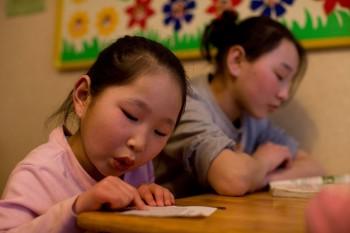It’s helpful to bring the characters and events from the books your child has read into your daily lives. Talk about what one of the characters did, ask why the character acted a certain way, and discuss how the other characters in the story felt about it. Quote from the book when a similar situation comes up in your daily activities. In my family, for example, we enjoyed the Winnie-the-Pooh stories, and would often use our favorite lines from the books in our conversations. When my mother asked us if we wanted a sandwich, our response would be, “Sandwiches are what Tiggers like best,” or when my brother was being a little too energetic, we’d ask him if he had to be “quite so bouncy,” which was Piglet’s frequent comment about Tigger.
As your child becomes a more advanced reader and starts reading on his own, get his mind thinking about the plot, the main characters, the motivations for their actions—all these are questions you can ask, even if you haven’t read the book. This gets the child thinking about what they are reading, and your interest can stimulate theirs.
You can continue the fun by having your children make a puppet show involving the characters of a favorite book. Puppets can be cardboard cutouts glued onto craft sticks, or decorated socks. A table covered with a cloth can be the stage. Alternately, they can make clay figures of the characters and act out the story with them.
A friend of mine has a four-year-old daughter who memorized “Little Tuppen,” the classic children’s book by author and illustrator Paul Galdone. My friend decided to videotape the four year-old and her two-year-old sister playing the parts with various props. The girls’s mother and father were the narrators. This videotape is still treasured as a fond family memory 15 years later. Indeed, family can play a big part in nurturing an environment that encourages a child’s love of literature—I learned the famous lines of poems by great English poets long before I knew what they meant, because my older sisters would often share them with us.
You can even incorporate the settings of the books your child is reading into their lunches. For instance, with a “Treasure Island” theme, you can recall a parrot calling, “Polly wants a cracker!” by serving crackers with tuna fish. You can also serve apples like the ones Jim was after when he jumped into the barrel, and juice or milk to be the pirates’ rum.
Other Sources of Reading
Besides reading books, there are numerous occasions to read other printed material throughout the day, and this can help improve your child’s reading and academic abilities. As you drive around town, point out interesting signs to read together, or look for instructions that your child can read aloud as you enter a building. When planning a trip, look over the maps together. You can seek out bus or subway schedules, movie screenings, hours of operation for the skating rink, or anything else that gives information the child might care about. When you buy and assemble a new piece of equipment, you can have him read over the instructions and warnings with you.
As your child grows older, you might listen to news reports on the TV or radio with him. Afterwards, look up the same story in the newspaper or an online news service and compare the different ways in which the same story was covered. You can compare a book to its movie version, discussing the different qualities of each, identifying which actions and characters were portrayed differently, and how that affected the story.
As you and your child evaluate and compare the different media, you can start using some of the academic words that will become a part of your child’s language in school. Your child will feel confident when the teacher first introduces the word “infer” to the class, and he is already familiar with the word. Other words that he will frequently encounter in school include: “summarize,” “analyze,” “evaluate” and “identify.”
You can use these words in a variety of ways in your daily conversations with your child. Invite him to infer, for example, that your sister doesn’t like green beans because she pushes them around her plate and cuts them into small pieces, but never eats them. You can summarize to your child a meeting or family gathering you attended last weekend; analyze what went right or wrong during the family vacation last year; evaluate an idea for what to do for vacation this year; or ask your child to identify the ingredients in a dish he ate at a restaurant.
There are many ways to involve your child in the world of books. If you aren’t sure what he is ready for, one helpful resource is the PBS (Public Broadcasting System) Parents website, which includes a timeline of the multiple reading stages a child goes through. Developmental psychologist Erik Erikson’s eight stages of psychosocial development can also be a source of reference.
If you pay attention to the feedback your child gives you, you’ll be able to adjust the reading to fit his level, and to keep up with his evolving interests. Some days, he will ask for the same book over and over. Other times, he’ll ask for a new book every few minutes. As you show genuine interest in the books your child is reading and in your child’s responses, he will develop lifelong friendships with a crowd of characters and authors.




